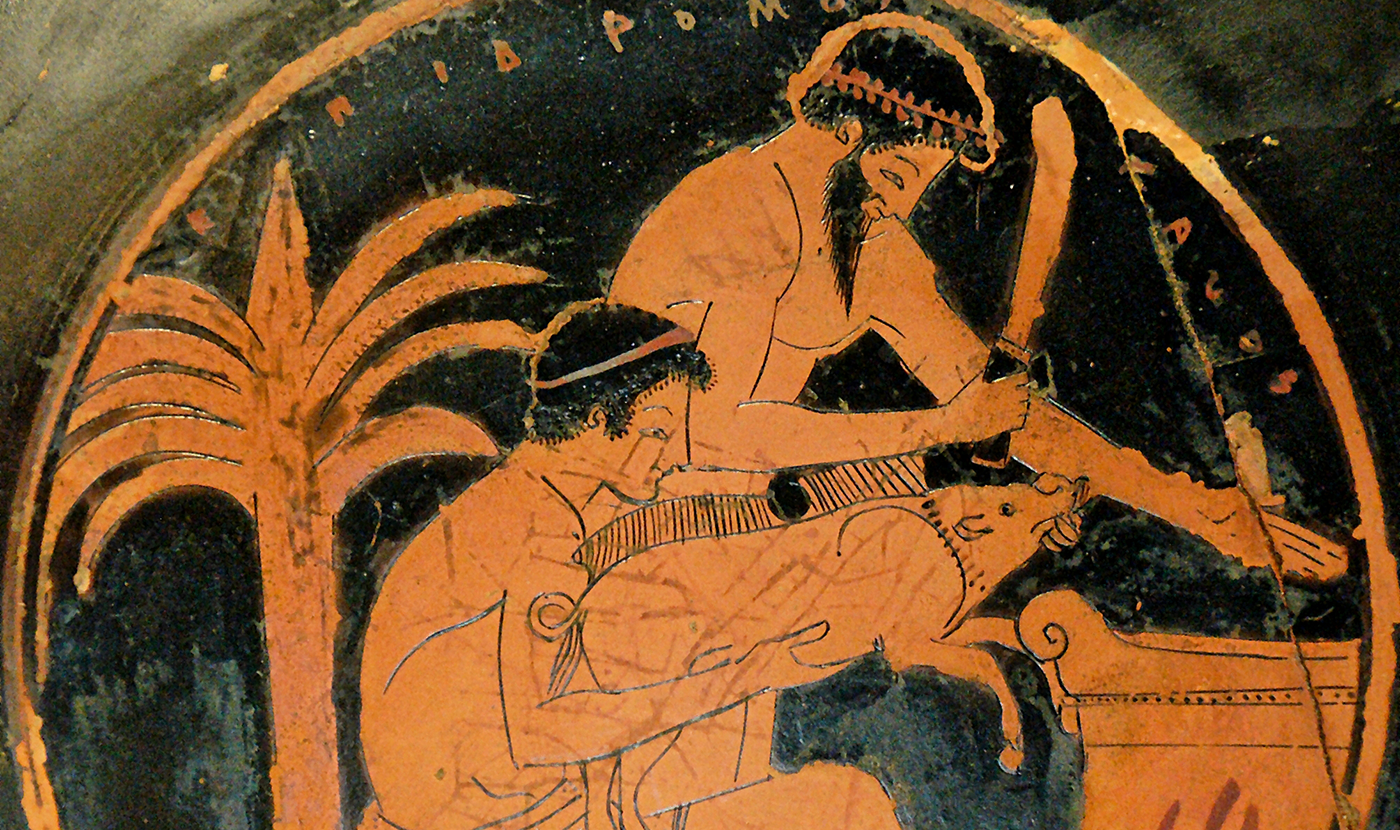Sacrifice
Sacrificing animals was common during Antiquity, justifying the slaughter of animals. Jesus’ sacrifice overturned this order and replaced such ancient customs. It is reproduced in the Eucharist, but its interpretation remains complex. How are the bread and wine interpreted in Christianity? Catholic and Protestant opinion tend to differ on this point.
Ancient sacrifices
Sacrifices, generally of animals, and offerings to the gods can be found in many religions. Eating meat has always raised a fundamental issue: that of killing an animal. It had to be sacrificed so that the slaughter did not resemble a gratuitous, everyday act.
In Ancient Greece, it was inconceivable to eat meat without having first sacrificed the animal to the gods. Meat was seen as an exceptional foodstuff; it had to be shared with the gods before being shared with the guests at a banquet. Part of the animal, however small (a few hairs for example), was offered up to the gods. This was a familiar custom in the Roman Empire and meat consumption increased right from the first centuries of the Common Era. Sacrifices were also performed by Hebrews, for whom blood represented life and had to be poured onto an altar as an offering to God. Moreover, for Hebrews, it was, and still is, forbidden to consume blood.
A new form of sacrifice
During the Last Supper, Jesus offered himself as a sacrifice. This deed gradually replaced the sacrifices of Antiquity. The first Christians in the Roman Empire refused to sacrifice animals to pagan gods or to eat meat from sacrificed animals. They recognised only one sacrifice, that of Christ, thereby asserting their belonging to the new religion. Imperial authorities deemed such behaviour inacceptable and persecuted those who refused to sacrifice animals to the gods. However, Christianity gradually became more dominant and, in the 4th century CE, it became an official religion and animal sacrifices were abandoned. However, Christians relive the divine sacrifice, symbolised by the breaking of the bread, called Holy Communion, the Last Supper or Eucharist.
A mysterious sacrifice
When Jesus said, “I am the living bread. [...] Whoever eats this bread will live forever,” his audience was shocked. They exclaimed, “How can this man give us his flesh to eat?” and “This is a hard teaching! Who can accept it?”(John 6; 51-60). Indeed, the words used by Jesus were unsettling. Was it cannibalism or theophagy (from theos ‘god’ and phagein ‘to eat’)? Ecclesiastics have long debated the question of the real presence of Christ in the Eucharist. What exactly is the bread and the wine shared by the worshippers during Communion? For Catholics, there is a mystery of transubstantiation as the bread and wine change substance and really become the body and the blood of Christ. For a long time, worshippers had to fast before receiving the Communion bread, or host (from the Latin hostia: ‘victim’). For Protestants, however, the presence of Christ in the bread and wine is symbolic rather than real.
Walter, Philippe, 2003. Mythologie chrétienne. Paris : éditions imago
Souan, Olivier, 2015. Commémorer la résurrection du Christ. Le Point Références, Le christianisme : rites et fêtes. Janvier-février 2015. pp. 20-21
Grottanelli, Cristiano, 1996. La viande et ses rites. In Flandrin, Jean-Louis, Montanari, Massimo. Histoire de l’alimentation. Paris : Fayard. pp. 117-132
Fischler, Claude, 2001. L’homnivore. Paris : Odile Jacob
Rousseau, Vanessa, 2005. Le goût du sang. Paris : Armand Colin
La Sainte Bible, dite Bible de Jérusalem, 1955, Paris : Le club français du livre.



